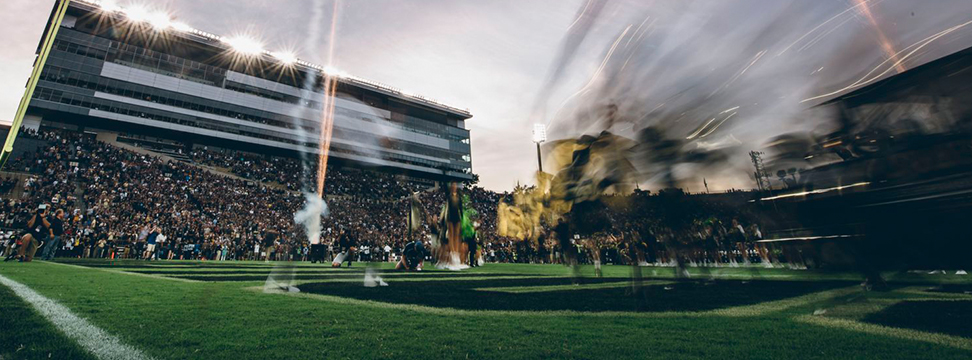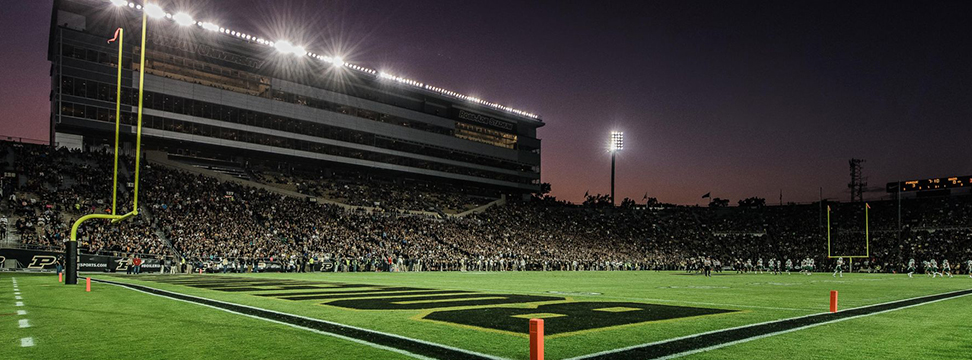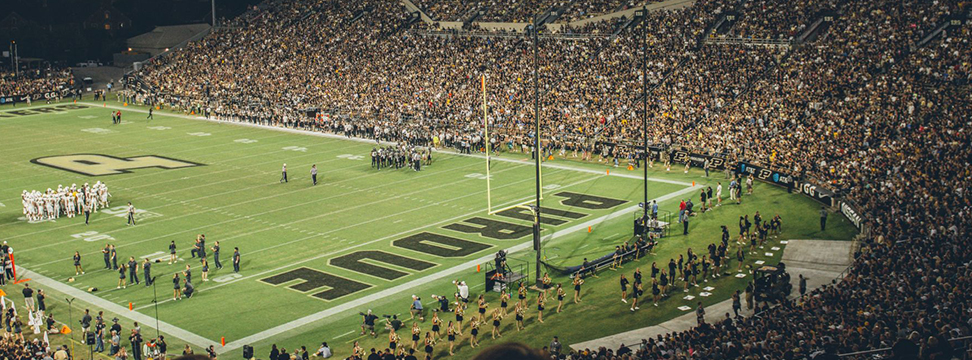ROSS-ADE STADIUM

Ross-Ade Stadium - Football Performance Complex
Nestled on the northern edge of the Purdue University campus, venerable Ross-Ade Stadium celebrates its 94th season as the home of Boilermaker football in 2017.
Ross-Ade was dedicated Nov. 22, 1924, in a game against intrastate rival Indiana, which the Boilermakers won 26-7. The stadium is named for its two principal benefactors, alumni David E. Ross, late president of the Board of Trustees, and the late George Ade, a playwright and humorist. It was Ross who conceived the idea for the stadium and selected the site. He and Ade purchased and presented to the university the 65-acre tract on which the stadium is located.
The stadium's original seating capacity was 13,500 (with standing room for an additional 5,000). Six expansions, plus end zone bleacher seating, eventually raised it to 69,200 in 1970. Capacity presently is 57,236.
From 2001 to 2003, Ross-Ade underwent a $70 million renovation that has made it one of the most attractive and fan-friendly facilities in all of college football.
In 2006, a cold-tolerant strain of Bermuda grass was installed in Ross-Ade, making it the first Big Ten Conference stadium with such a surface. A year later, a 31-foot by 68-foot Daktronics video board, priced at $1.7 million, was installed at the south end of Ross-Ade to significantly improve replay and other entertainment possibilities.

The South End Zone Patio, which features tailgate food and beverages in an attractive 16,000-square foot area, opened in 2014 and is available to football season-ticket holders and Purdue students who are members of the Ross-Ade Brigade. The patio is a temporary addition while plans for a multi-purpose building are considered. Additional forthcoming stadium enhancements include lights, video board, distributed sound system and ribbon boards, as well as updates to the Ross-Ade Pavilion and routine maintenance.
Ross-Ade features the Prescription Athletic Turf (PAT) drainage system, developed by Purdue staffers William H. Daniel and Melvin Robey in the early 1970s. It was installed in the stadium in 1975 at a cost of approximately $125,000. The PAT system is a network of pipes connected to pumps that extract water from the grass and can help keep the field playable and virtually divot-proof, even during a storm dumping one inch of rain or more per hour.
Through the 2016 season, Purdue boasts an all-time record of 278-184-13 in Ross-Ade, a .599 winning percentage.
The largest crowd ever to see a game in Ross-Ade is 71,629 against Indiana on Nov. 22, 1980.


